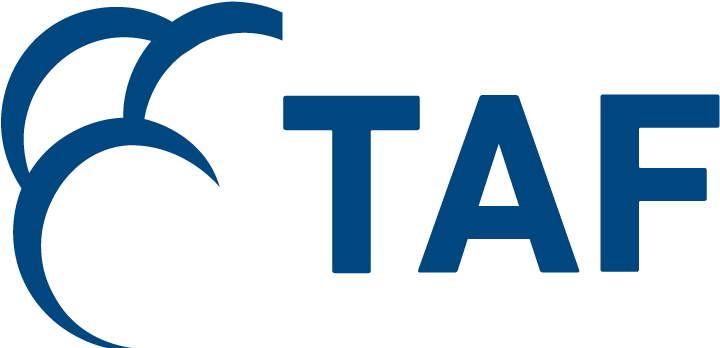Image credit: Sasan Hezarkahani via Unsplash
What happens in Washington doesn’t stay in Washington – especially when it comes to climate policy. Even though a majority of Canadians want to see more climate action from their government, many of Canada’s regulations are designed to align with or follow U.S. benchmarks. When those benchmarks are weakened by the Trump administration, it creates policy uncertainty for Canadian governments, industries, and consumers alike. It also opens the door to coordinated lobbying efforts pushing for weaker domestic standards.
Energy efficiency comes under fire
The U.S. Department of Energy is moving to weaken over a dozen efficiency standards for appliances and equipment, and Natural Resources Canada has indicated plans to align with several of these lower standards. Currently, Canadians have access to federal and provincial retrofit incentives, and their success depends on the availability of high-efficiency equipment. Due to the close economic and physical relationship between the two countries, weakening standards means less efficient appliances entering the Canadian market. This leads to increased energy bills for residents and undermines emissions reductions.
The ENERGY STAR Program, which has helped Americans and Canadians choose the most energy efficient appliances and save on their energy bills, was also on the chopping block. Since 1992, this program has saved consumers more than $500 billion in energy costs and has provided tremendous health benefits as a result of lower CO2 emissions. Locally, the cancellation of this program would have caused many issues for the 62 “ENERGY STAR for Products” rebates and incentives that are available for Canadians.
More recent activity in the U.S. Congress means that ENERGY STAR is likely to be funded for the remainder of 2026. However, Canada should still explore creating a domestic alternative to ENERGY STAR, and for the Portfolio Manager program in particular. Many Canadian programs such as building performance standards, BOMA Best, and LEED depend on it for compliance, yet its data is stored on U.S. servers and the platform remains vulnerable to U.S. funding cuts. A Canadian-built equivalent would provide the same benchmarking capabilities while safeguarding access and security.
There is an opportunity for Canada to champion an onshore version of ENERGY STAR to ensure continued access without the constant threat of potentially losing access due to politics in the south.
Tailpipe emissions standards benefit Canadians
Over the past five years, tailpipe emissions regulations, administered by the U.S. Environmental Protection Agency (EPA), have been changed three times, starting with the original Obama-era policy in 2012, Trump’s rollback in 2020, Biden’s reversal in 2024, and now we are once again looking at a Trump era rollback this year. Each time, Canada has had to align with the U.S. standards, creating immense policy uncertainty for industry and resulting in negative implications for both the environment and economic planning at all levels of government.
Now, the U.S. EPA is re-evaluating the Biden-era Light-Duty and Medium-Duty Vehicles regulation and Greenhouse Gas Emissions Standards for Heavy-Duty Vehicles. These rules were designed to significantly cut carbon emissions by accelerating the shift to electric and low-emission vehicles, especially in the 2027–2032 timeframe. Re-evaluating these rules opens the door to slowing down the electric vehicle (EV) transition and allowing for more traffic-related pollution. These changes could have a significant negative impact on local policies ranging from climate targets to resident health to EV charging.
At the same time, the National Highway Traffic Safety Administration (NHTSA) is signaling it will set lower fuel efficiency targets in the future. In a new interpretation, the NHTSA claims it cannot consider vehicles required under state zero-emission vehicle (ZEV) mandates – such as California’s – when calculating federal fuel economy standards. While this doesn’t immediately change current standards, the NHTSA has said it will apply this interpretation when reviewing and enforcing both existing and future rules. As a result, automakers would be able to sell more fuel-consuming vehicles while still meeting federal targets. These shifts in the U.S. would have massive ripple effects, likely leading to an increase in manufacturing of less-efficient vehicles across North America.
Canada is already facing pressure from the auto industry to weaken or repeal its own EV Availability Standard. If the U.S. walks back its EV standards, Canada may be forced to align, which would have dire consequences, including 11,000 premature deaths and over $90 billion in foregone health benefits.
These moves are part of a broader agenda. Under Executive Order 14154, “Unleashing American Energy,” U.S. federal agencies have been directed to identify and eliminate so-called “regulatory burdens”, with many environmental regulations listed in the directive. The Department of the Interior has already wrapped up a consultation focused on identifying said burdens.
Canada has the opportunity to chart its own path
To ensure long-term environmental and economic resilience, Canada must decouple its regulatory direction from the United States. We can no longer afford to be reactive, especially with emissions targets, resident health and safety, and local economic opportunities hanging in the balance.
Key Canadian policies on energy efficiency and clean transportation emissions are at risk. Rather than watering down our standards in response to U.S. rollbacks, Canada should double down – defending, modernizing, and strengthening our own regulations to reflect Canadian priorities, economic conditions, and climate commitments.
Our environment, our economy, and our future depend on it.

